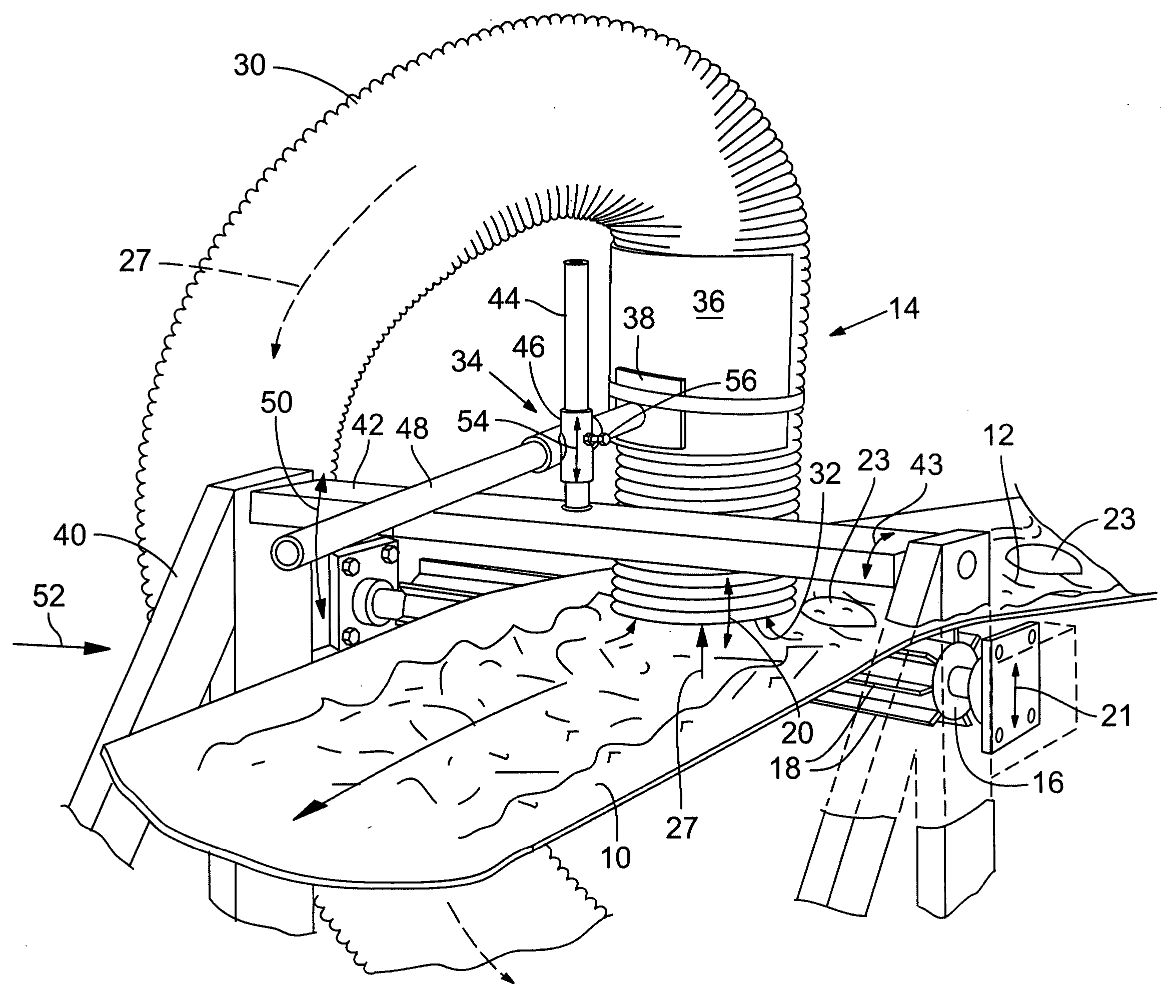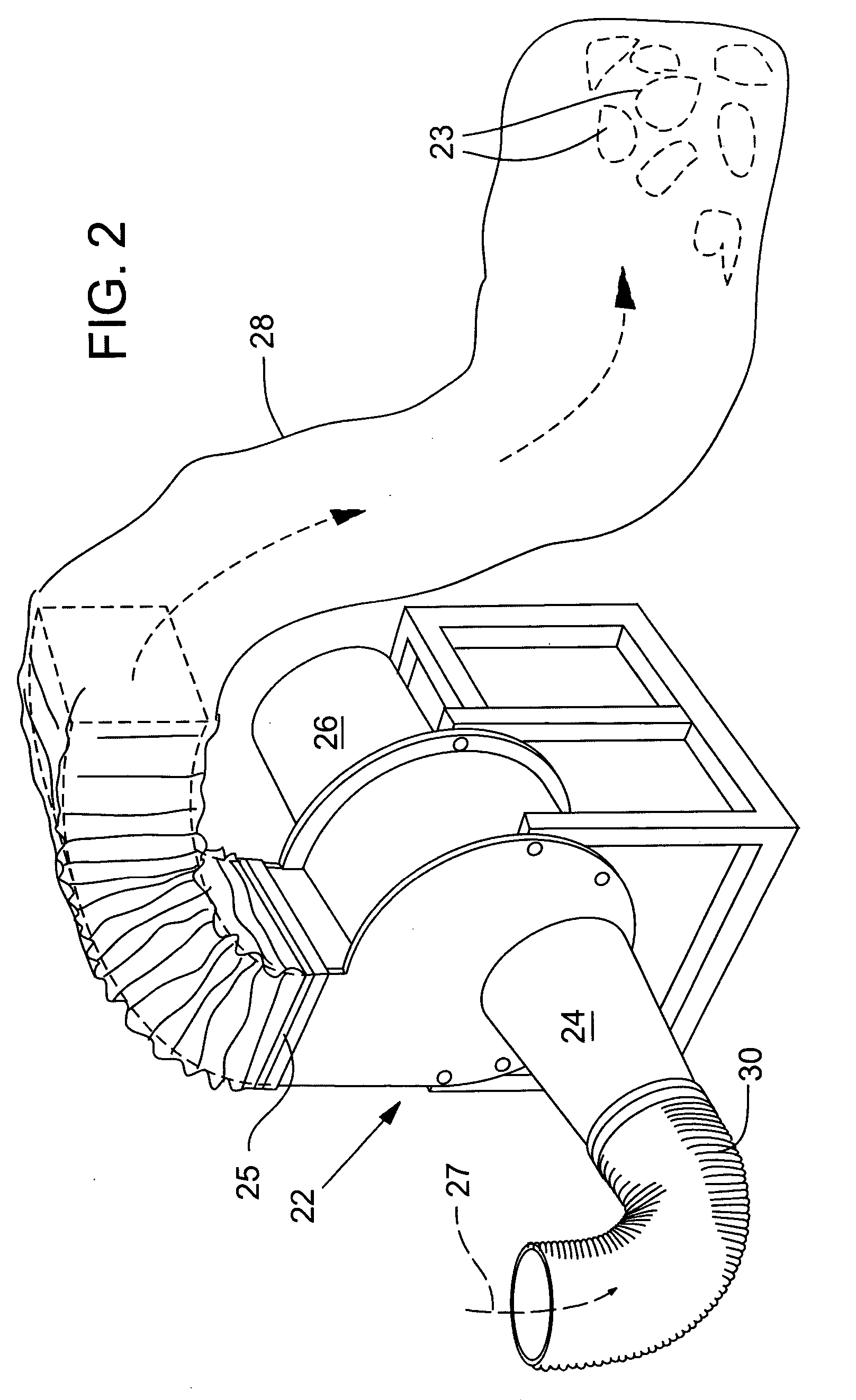System for removing plastic from recycled material
a recycling material and plastic technology, applied in the field of systems, can solve the problems of high volume of separated and removed quantities, unavoidable, and dependencies on relative mass
- Summary
- Abstract
- Description
- Claims
- Application Information
AI Technical Summary
Benefits of technology
Problems solved by technology
Method used
Image
Examples
Embodiment Construction
[0012]FIGS. 1 and 2 illustrate an embodiment of the invention. FIG. 1 shows a trough-type conveyor belt 10 conveying ground up yard debris 12. The yard debris 12 typically has been through prior processing step(s) including a grinding process that e.g. reduces tree limbs and the like to chunks of vegetation referred to herein sometimes as bark chips. The bark chips have further been separated into size categories by screening which typically includes placing the bark chips on one end of an inclined vibrating screen where small bark chips pass through the screen and the larger size chips are vibrated along the screen length and deposited off the screen end. This latter debris-type is referred to as bark chip overs or simply as overs. Plastic bags that have been shredded by the prior grinding operation are largely contained in the bark chips' overs. It is the bark chip overs with plastic pieces that make up the material 12 of FIG. 1 and the operation of the apparatus of FIGS. 1 and 2 ...
PUM
| Property | Measurement | Unit |
|---|---|---|
| diameter | aaaaa | aaaaa |
| plastic | aaaaa | aaaaa |
| size | aaaaa | aaaaa |
Abstract
Description
Claims
Application Information
 Login to View More
Login to View More - R&D
- Intellectual Property
- Life Sciences
- Materials
- Tech Scout
- Unparalleled Data Quality
- Higher Quality Content
- 60% Fewer Hallucinations
Browse by: Latest US Patents, China's latest patents, Technical Efficacy Thesaurus, Application Domain, Technology Topic, Popular Technical Reports.
© 2025 PatSnap. All rights reserved.Legal|Privacy policy|Modern Slavery Act Transparency Statement|Sitemap|About US| Contact US: help@patsnap.com



